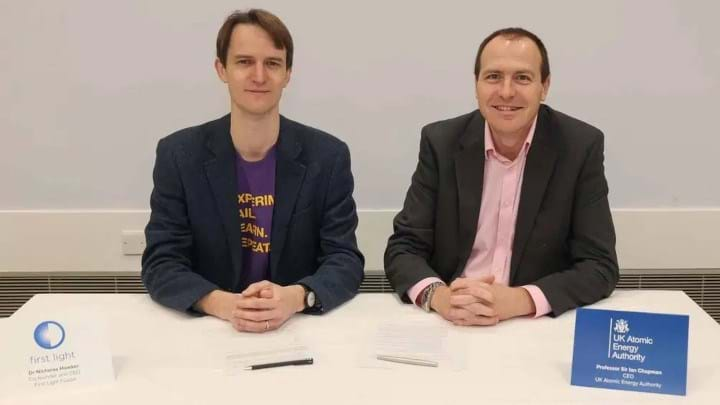UK partners to advance inertial confinement fusion

FOLLOWING the US’s major fusion breakthrough with inertial confinement technology, a UK partnership has announced that it will design and construct a demonstrator for a similar approach at the UK Atomic Energy Authority’s Culham Campus in Oxfordshire, UK.
In December 2022, US researchers for the first time demonstrated fusion ignition, when a reaction experiment generated more fusion energy than was delivered to the target by lasers. This was at the US National Ignition Facility (NIF) at the Department of Energy’s Lawrence Livermore National Laboratory. The success was achieved using an inertial confinement fusion process, in which high-energy lasers converge on a target and heat a fuel capsule to trigger energy generation.
Like the US researchers, First Light Fusion is pursuing an inertial confinement approach. However, its technology differs in that it relies on a high-velocity projectile to trigger fusion instead of lasers. First Light says its projectile approach is simpler and more energy efficient, with lower physical risk.
Fusion research organisation UK Atomic Energy Authority (UKAEA) has validated First Light’s approach. It has now signed an agreement with First Light for a purpose-built facility that will house Machine 4, a device that is expected to allow First Light to follow in the US’s footsteps by achieving net gain. While the facility will not generate power, it will be used to develop technology needed for inertial confinement fusion energy powerplants.
Nicholas Hawker, CEO of First Light Fusion, said: “The recent gain result from the National Ignition Facility in California proved what we always knew – that inertial confinement fusion works and offers the potential for a faster route to commercial fusion…Our approach leverages the same physics now proven by NIF but combines it with a unique approach that gets to a competitive cost point in a truly scalable manner. We’ve already proven fusion. Gain is our next milestone. We are very confident Machine 4 will allow us to achieve this, while we continue to develop plans for a pilot commercial fusion powerplant.”
First Light has worked constructively with UKAEA for years and expects that locating Machine 4 at the Culham Campus will bring significant expertise and supply chain infrastructure. UKAEA conducts research on fusion energy and related technologies, with the aim of positioning the UK as a leader in sustainable nuclear energy.
Construction is set to begin in 2024, with operations likely to begin in 2027.
Machine 4 will join other fusion energy projects at the Culham Campus, including General Fusion’s demonstrator plant which was granted planning permission earlier this year.
Fusion is a potential source of clean energy that would generate electricity using heat produced by nuclear reactions. In contrast to nuclear fission, which generates heat by splitting atoms, fusion releases energy when atoms are merged. Once commercially realised it could transform global power generation and help to achieve a lower carbon economy.
Recent Editions
Catch up on the latest news, views and jobs from The Chemical Engineer. Below are the four latest issues. View a wider selection of the archive from within the Magazine section of this site.




